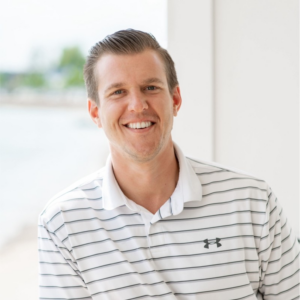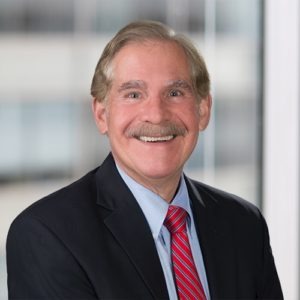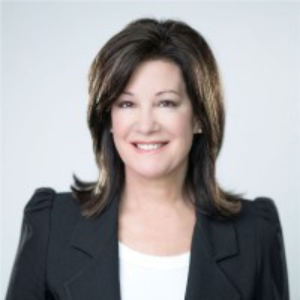View from the Trenches: Interview with Daniel Haimowitz, MD, FACP, CMD
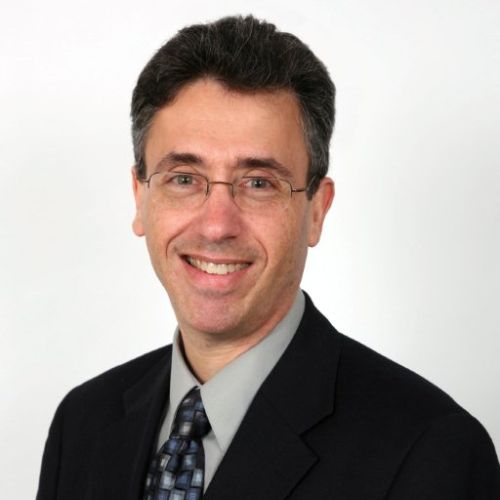
Daniel Haimowitz, MD, FACP, CMD
Daniel Haimowitz, MD, FACP, CMD is a past Board Member of PALTmed, the Post-Acute and Long-Term Care Medical Association, formerly known as AMDA, the American Medical Directors Association, where he’s chaired multiple committees, and is the past president of PALTmed- PA, previously the Pennsylvania Medical Directors Association.
He has served on national and state boards and been the recipient of prestigious awards such as the PALTmed Dodd Award for Distinguished Service and the Pattee Award for Excellence in Education. In 2001, he was awarded the American Geriatrics Society’s Clinician of the Year.
He currently serves on his state’s Long Term Care Council and has practiced clinically across the spectrum of long-term care.
AH: For those readers who may not be familiar with PALTmed, can you tell us something about the organization and its mission?
DH: PALTmed is the only medical specialty society representing the community of medical directors and healthcare professionals working across the continuum of long-term care (LTC), including skilled nursing facilities (SNFs), assisted living communities, continuing care retirement communities (CCRCs), home care, hospice, PACE programs, and other post-acute and long-term care settings. Our mission is to empower compassionate and skilled clinicians to deliver person-centered care in those settings.
AH: PALTmed provides a mechanism for a physician to become a Certified Medical Director (CMD). Can you tell us about the CMD credential and what is involved in obtaining one?
DH: All nursing homes are federally required to have a medical director who is responsible for overseeing the overall medical care in the facility, ensuring high-quality patient care, and implementing resident care policies. PALTmed and I believe they should become certified, similar to many other positions in healthcare. Becoming a CMD shows the physician possesses the necessary education, skills, dedication, commitment to excellence, and insights to effectively navigate the complexities of the role ‑ to establish them as leaders in post-acute and long-term care (PALTC) medicine.
Certification as a CMD demonstrates that the medical director is committed to career development and quality care. The professional standards of the CMD certification process assure regulators and consumers of the competency and consistency of practitioners working in post-acute and long-term care settings. Facilities led by CMD-certified directors see meaningful improvements in care quality and patient outcomes.
PALTmed offers a Core Curriculum on Medical Direction, the only program of its kind, offering comprehensive instruction on management and leadership within the PALTC setting. It is divided into two parts: an Online Core Curriculum, which is an on-demand course, and a Core Synthesis, a live virtual course held twice a year.
AH: PALTmed develops comprehensive clinical practice guidelines (CPGs) that represent the gold-standard of evidence-based scientific research as the basis for clinical practice. Can you describe the process of how PALTmed develops CPGs?
DH: The PALTmed Clinical Practice Guidelines process involves a systematic approach to recognition, assessment, treatment, and monitoring of various conditions in post-acute and long-term care settings. The guidelines are developed by a team of volunteers and are not funded by companies. The guidelines are reviewed and feedback is provided by members of the work group, ensuring their relevance and applicability in the healthcare setting.
The CPGs are available from PALTmed and society members can access them electronically. The guidelines are designed to assist healthcare professionals in making evidence-based clinical and management decisions, ultimately improving patient care and outcomes in PALTC settings.
AH: Do you think medical schools devote enough time to geriatric medicine? What can new physicians do to fill in any gaps?
DH: They certainly didn’t when I went to medical school! But that’s been some time ago. I believe the more teaching about geriatric medicine, the better. I absolutely think there’s an opportunity to do more education about PALTC in medical schools and college also. I had been working with my alma mater, Penn State, to try to get pre-med students some nursing home experience during their summers off. It was very well received and there’s much more that can be done. I hope it can be continued and expanded upon.
AH: What do you see as some of the most pressing problems seniors face from a health perspective?
DH: There are a host of issues, especially with the “Silver Tsunami” with more and more people reaching age 65 and above ‑ certainly issues related to dementia, both dealing with the effects and the hope of effective treatment, agism, and barriers to accessing appropriate healthcare services. Overall, not just applicable to seniors, is the current climate of a seeming disregard to the real science of medicine.
AH: The issue of vaccines has been in the news quite a bit lately and people are confused about the guidance, especially concerning vaccines for COVID-19. What advice can you provide to help seniors make an informed decision?
DH: It’s a hard question to answer. Personally, I think people should have deep skepticism about conspiracy theories, particularly ones that involve partisan politics. Hopefully, they can trust their physicians, who also hopefully are giving advice based on science, not what they’ve done by “their own research” on the internet.
AH: As you know, 39 states and DC have legalized medical marijuana, yet it remains a Schedule I drug under the federal Controlled Substances Act. Do you see a justification for registered users in the states that allow medical marijuana to be able to use it when their physician recommends it?
DH: Many states have legalized marijuana, and I don’t think there have been particularly bad outcomes. It’s been an issue in long-term care because marijuana is still not authorized federally, so it isn’t legally allowed in facilities that accept federal funds, like all nursing homes! It’s been difficult for me to use for my patients in assisted living, where we’ve had to do a “don’t ask don’t tell” approach, which I have felt uncomfortable with.
AH: Let’s talk about skilled nursing facilities a bit. COVID-19 had a devastating impact and especially on residents in SNFs. Are there lessons learned and things we could do differently, in hindsight?
DH: Sure, there were mistakes made. But don’t ever forget this was a once-in-a-lifetime disaster. I really do feel one thing we should do is not be too hard on people who, for the most part, were trying to do the right things. In hindsight, I would not have isolated residents the way we did. I think that was catastrophically bad for both them and their loved ones.
AH: Given what some are calling the “Silver Tsunami” and our aging population, is it likely we will see an increase in the amount of people who require skilled nursing care? Is that inevitable?
DH: I’m not certain that’s inevitable. I believe there will always be a place for skilled nursing care, for the people who really need the services provided there and can’t get them anywhere else. I think multiple factors are already happening that may shift the care elsewhere – things like states’ focus on home and community-based services, Programs for All-inclusive Care of the Elderly, and assisted living communities (where already there are more residents than in nursing homes). One of many challenges in that setting, however, is providing good medical care in an industry that has resisted the so-called “medical model” for decades, despite the increasing medical needs of their residents.
AH: The Centers for Medicare and Medicaid Services (CMS) has a Red Hand “consumer alert” that it will place next to a SNF’s profile on the CMS Care Compare website if they meet certain criteria – including two low-level deficiencies related to abuse in a three-year period, even though no resident was harmed in any manner. PALTmed had previously written to the CMS administrator expressing a belief that the Red Hand is counterproductive and stands in contrast to the patient safety movement which focuses on systems improvement, not the “blame and shame” game. Do you have any thoughts about CMS imposing the Red Hand alert?
DH: There are some overlying issues here. One is that the nursing facility survey process in my opinion is flawed – it’s overly punitive and not consistent. There are instances, for example, where a facility cannot convince surveyors that there is no deficient practice, which is a violation of a specific federal regulation. Survey deficiencies may not correspond or reflect the quality of care residents receive. Additionally, the CMS Care Compare website is not user friendly. Even some of my professional colleagues do not understand the data. So, to sum up, I agree with PALTmed’s position that the Red Hand alert icon is punitive and contrary to the patient safety movement. We need to move the survey process to be more collaborative.
AH: PALTmed also filed an amicus brief in support of the proposition that all nursing home surveys should have at least one RN. If a survey team lacks an RN, as currently allowed for revisit surveys and complaint investigations, are there any potential problems with that?
DH: Totally agree! I think many potential survey deficiencies could be prevented with the increased knowledge of an RN on the survey team. The only potential challenge I see with this is a shortage of available RNs for the survey team.
AH: On the federal legislative front, are there any specific bills that you or PALTmed would like to see introduced or passed?
DH: Not sure there are any specific bills at this time. Among the legislative issues that PALTmed is focused on are physician payment, telehealth, prior authorization reform, vaccinations, AI in healthcare, interoperability, nursing home surveys, assisted living, PBM reform, and the 3-day hospital stay requirement.
AH: The issue of antipsychotic medications has aroused considerable attention in the past 10-15 years, especially when prescribed in an off-label manner. First, can you explain what “off-label” means, and do you have any suggestions regarding how antipsychotic medications are prescribed for seniors? Also, please explain what the FDA’s “Black Box” warning is and how it relates to antipsychotic medications.
DH: “Off-label” prescribing is the practice of prescribing a medication for a purpose that is not approved by the FDA. This means that a doctor may use a medication to treat a condition in a manner that differs from what the FDA has specifically approved. While off-label use is common and can be beneficial, it is important that it is done with careful consideration and based on sound medical evidence. Prescribing a medication “off-label” can increase liability risk for prescribers if there are any adverse drug events.
Doctors may prescribe antipsychotic medications to treat the neuropsychiatric symptoms (NPSs) of dementia, which can include aggression, agitation, or psychosis (e.g., hallucinations and delusions). The use of these medications for psychotic symptoms, which are also very common in patients with schizophrenia, is “on-label.” Treatment with antipsychotic medications for other NPSs is “off-label.” Non-pharmacologic treatments should be used if possible, and use of these medicines as chemical restraints, or to use for insomnia, should be strongly discouraged.
A black box warning is the most serious warning issued by the U.S. Food and Drug Administration (FDA) regarding medications. It is designed to alert healthcare providers and patients about potentially serious or life-threatening side effects associated with a drug. These warnings are typically formatted with a prominent box around the text in the drug’s labeling to emphasize the risks. There is a black box warning for antipsychotic medications because of significant safety risks, particularly an increased risk of death.
AH: There has been a trend where skilled nursing facilities admit residents who have higher levels of acuity along with increasingly complex medical problems. We’re seeing residents who may be on ventilatory support who require dialysis and may have PICC lines. We are also witnessing more residents being admitted to SNFs who have a history of substance use disorders (SUD). How can SNFs best prepare for the types of medical challenges that years ago would have kept a person in a hospital?
DH: Areas that SNFs could focus on are having adequate, well-trained staff (including agency staff), being prepared for emergencies, having effective infection control measures and coordinating with community partners to make sure residents are safe in case of an emergency. I feel having an engaged, knowledgeable medical director also helps the SNF provide high-quality care for complicated residents.
AH: Are we providing sufficient dementia care? What improvements could nursing facilities make?
DH: We’re seeing an increasing number of residents being admitted with a dementia diagnosis. Having adequate and well-trained staff is essential.
AH: Falls are the most common cause of injury for seniors. Can we do more to mitigate, if not eliminate, the risks of falls among seniors?
DH: Falls are a major focus in the LTC setting. There are many collaboratives to try to prevent falls, and it is also an important part of the nursing home’s Quality Assurance and Performance Improvement (QAPI) process. I don’t believe fall risk can ever be eliminated completely, but nursing homes need to continually try to both prevent and have appropriate responses to falls, with a multi-disciplinary response. That would include using physical and occupational therapy, medical evaluations, proper medication use, evaluating the environment and other measures in a patient-centered, individualized approach. PALTmed is working on a CPG to address falls in long-term care.
AH: It has been studied and reported that loneliness and social isolation have an impact on mental health. Because there are congregate living and group activities in nursing facilities and memory care units, are residents less likely to suffer from the effects of social isolation? What can seniors who live alone do to combat this issue?
DH: One of the major issues we learned from the pandemic was the dramatic negative effect of isolation on residents in long-term care. It is well recognized that an important aspect of healthy aging is socialization (one of the core principles of the Blue Zones concept). Often, a person who lives at home alone and doesn’t see anyone moves into an assisted living community and subsequently thrives due to the positive benefits of improved socialization. Seniors who live alone should try to become more active, such as participating in hobbies with other people, or going to community centers or adult day care centers.
AH: Florida and California enacted mandatory CMD certification for medical directors of skilled nursing facilities. Is that something other states should consider?
DH: Yes! Wouldn’t everyone want a medical director in a nursing home to be certified that they are competent in their position? Wouldn’t a patient and their family want the medical director in their nursing home to provide excellent care to every resident? I think all nursing facility medical directors across the country should be certified as a CMD.
PALTmed members have become increasingly active as advocates in their states. I’m hoping they can help many other states follow the examples of California and Florida.
AH: Do most long-term care facilities have designated memory care units?
DH: As of April 2023, about a fifth of assisted living communities have designated memory care units to serve residents with cognitive impairment. This number may have even increased over the past couple of years. Less than 5 percent of all nursing home beds are dedicated to dementia special care units. Some nursing homes may have “de facto” memory care floors, which may or may not have restricted access like locked doors. While there are a significant number of residents with cognitive impairment in nursing homes, there seems to be more focus on specific memory care units/buildings in assisted living than nursing homes.
Note: The author thanks Dr. Haimowitz for candidly sharing his insights and expertise.
Correction: We inadvertently listed a previous bio for Alan C. Howowitz, Esq., RN. We apologize for any inconvenience and have corrected Alan’s bio below.
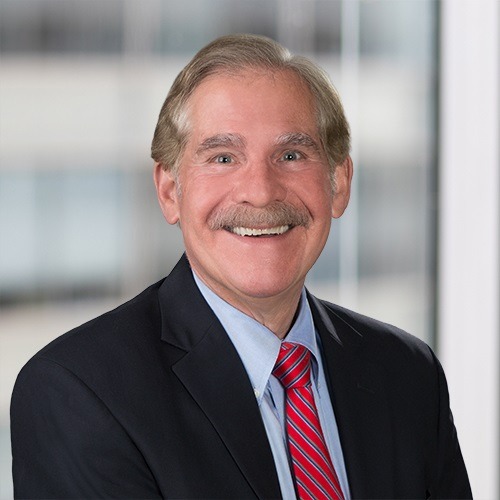
Alan C. Horowitz, Esq., RN, is principal at Alan C. Horowitz & Associates and a member of the IASC Editorial Advisory Board. He focuses his legal practice on regulatory compliance and risk management for skilled nursing homes, hospices and home health agencies and manages cases where the Centers for Medicare and Medicaid Services (CMS) has imposed an enforcement action.
He is a former partner at Arnall Golden Gregory LLP, and also served as assistant regional counsel Office of the General Counsel, U.S. Department of Health and Human Services. As counsel to CMS, he was involved with hundreds of enforcement actions and successfully handled appeals before administrative law judges, the HHS Departmental Appeal Board and in federal court. He also has clinical healthcare experience as a registered respiratory therapist and registered nurse. He can be reached at AlanHorowitzLaw.com.
Related Articles
Topics: Alan C. Horowitz , Alzheimer's/Dementia , Clinical , Executive Leadership , Facility management , Featured Articles , Leadership , Operations , Regulatory Compliance , Risk Management , Staffing , Training



